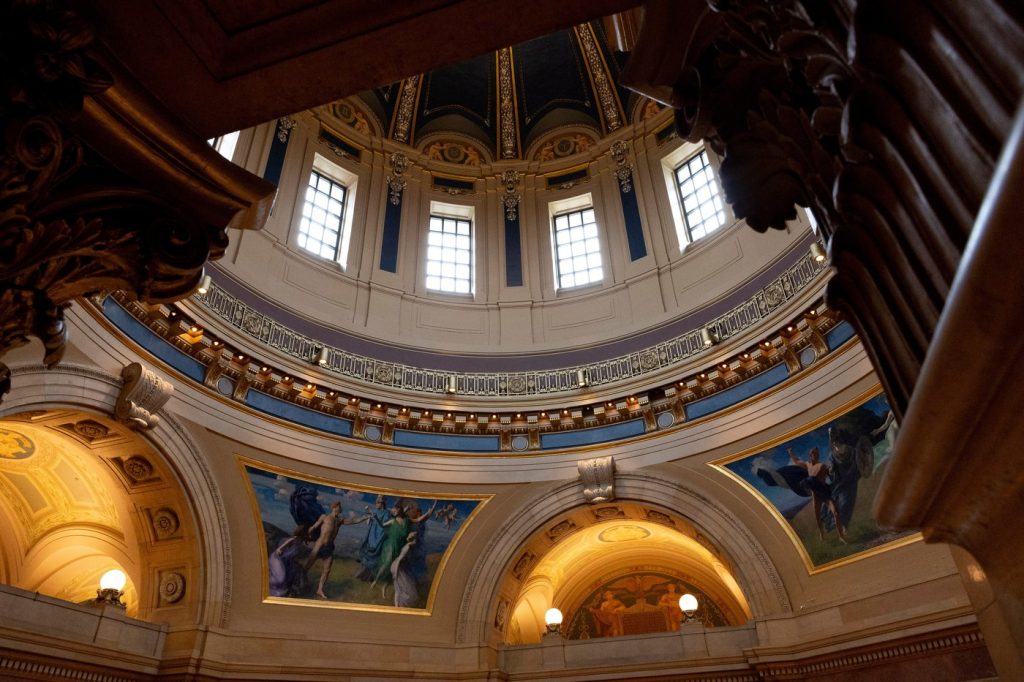In Washington, the election scene is heating up as Jacob Frey, the two-term mayor of Minneapolis, seeks reelection against a diverse field of more than a dozen challengers. At the forefront of the competition is state Senator Omar Fateh, who identifies as a democratic socialist and campaigns for significant changes to what he refers to as the “status quo.” This election marks a pivotal moment for Minneapolis, particularly in light of its recent historical challenges, including the murder of George Floyd in 2020.
Apart from the mayoral contest, voters in Minneapolis will also participate in filling two vacancies in state Senate districts. One seat became available following the resignation of a Democrat, Nicole Mitchell, after a burglary conviction, while the other seat was vacated by a Republican, Bruce Anderson, who passed away in office. The dynamics of these races are crucial, as Democrats currently maintain a slim one-seat majority in the Senate.
Jacob Frey, a Democrat, stands out as the best-funded candidate in the mayoral race, with substantial backing that includes a political action committee running digital ads against Fateh. He has garnered support from prominent figures such as Governor Tim Walz and Senator Amy Klobuchar, solidifying his status as a formidable incumbent. In contrast, Fateh, leveraging his connection to the Somali American community, has framed his campaign as a necessary shift toward progressive policies. He has successfully gained endorsements from notable politicians, including Representative Ilhan Omar.
The Minneapolis mayoral election employs a ranked choice voting system, established in 2009, where voters can select up to three candidates in their order of preference. This method continues until a candidate secures a majority of the votes. Previous mayoral races have shown that it often takes multiple rounds of counting to determine the final winner, highlighting the competitive nature of the electoral landscape.
In addition to the mayoral vote, the special elections for the state Senate seats are also significant. In District 47, Democrat Amanda Hemmingsen-Jaeger is contesting to succeed convicted former Senator Mitchell, while State Senate District 29 features Republican nominee Michael Holmstrom Jr. running against Democrat Louis McNutt. Historical voting patterns suggest that both districts tend to lean toward the Democratic Party, although District 29 has a recent history of Republican success in elections.
The election day for these crucial races is set for Tuesday, with polls closing at 8 p.m. local time, which corresponds to 9 p.m. ET. Voters eligible to participate in these elections include residents from Minneapolis and the specific state Senate districts, ensuring a broad engagement from the electorate.
As of late October, around 253,000 registered voters resided in Minneapolis, with turnout in the last mayoral election reaching approximately 54%. Early voting has also been a significant component, with about 20% of voters casting ballots before Election Day in 2021. Given the heightened interest surrounding the contested races this year, early voting has already seen considerable participation.
In previous elections, results reporting has varied, with the Associated Press typically beginning to announce findings shortly after polls close. For instance, in the last presidential election, initial results began appearing at 9:34 p.m. ET, marking a competitive and dynamic electoral environment as results come in throughout the night. Given this backdrop, the outcomes from the Minneapolis mayoral race and the state Senate special elections will be closely watched by both local and national observers.
As voters prepare to head to the polls, they will not only shape the future of Minneapolis but also have a significant impact on the broader political landscape in Minnesota, setting the stage for more extensive legislative endeavors in the years ahead.










